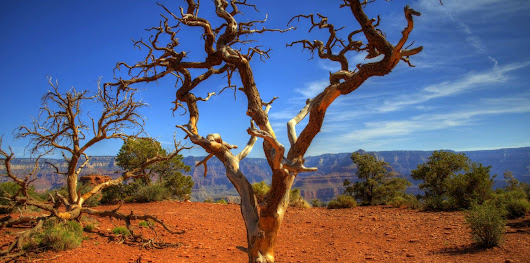"EngNotes" are my engineering notes. This is my way of creating a digital version of an engineering notebook. This particular entry is on
Woodworking. This is a living post, I will be updating it as I learn more.
Rules of the Road
- Always sand with the grain
- Random orbital sanders help allow you to sand any direction due to the random nature
- Wood swells/expands cross/perpendicular to the grain
- Boards tend to get wider, not longer
- In general, hardwoods are from deciduous trees and softwoods are from conifers
- Hardwoods are not automatically denser than softwoods, although it is common
- Oil based polyurethane tends to yellow the finish, water based polyurethane doesn't
- Use natural brushes for oil-based finishes and synthetic brushes for latex, acrylic or water-based finishes. Rollers and rags can work for either type of finish.
- Always sticker lumber that has been finished to the final dimension until you get ready to use it so that air can circulate evenly around all sides of the boards.
Tips and Tricks
- Put painters tape on edges to help contain glue squeeze-out
- Use packing tape or wax paper on surfaces that may stick to squeeze-out (like clamps)
- Cauls are used to keep a surface straight while clamping in the other direction
- Use a tack cloth to clean and remove dust
- Typically cheesecloth soaked in varnish to make it sticky
- Janka is the wood hardness scale.
Glues
- Traditional wood glue is PVA glue
- Sets up relatively quickly, 5-10min.
- Tightbond Type III takes twice as long to set as Typebond I and II
- Polyurethane glue
- Gorilla glue is a common brand
- Longer cure time than PVA glue
- Expands as it dries
- Requires moisture to cure
- Can come from moisture in the air
- To accelerate cure, wet the surfaces to be bonded
- Hide glue
- From animal hides
- Water soluble
- Don't use on things that need to be water resistant
Finishes
- Oils
- Drying oils cure in the presence of oxygen
- Boiled Linseed Oil (BLO), Tung Oil
- Boiled linseed cures much faster than tung because it has additives
- These oils heat up when curing. Old rags can spontaneously combust.
- Non-drying oils do not dry in the presence of oxygen
- Vegetable (peanut, olive), mineral oil
- Varnish is a very general term, consists of a resin dissolved in something
- Polyurethane, alkyd, phenolic are common resins
- Often varnish can be mixed with oils
- Lacquer
- Hardens through evaporation of solvent, not chemical reaction
- Can be redissolved by a solvent
- Shellac is bug poop
- Like lacquer, it hardens through evaporation of a solvent
- Alcohol is a common solvent
- Since alcohol is a solvent, its not recommended for surfaces like bar tops
- Can be affected by heat
- Lacquer and shellac tend to be harder but more brittle than varnish
- Coats of shellac and lacquer "melt into" previous coats because application of a new coat partially dissolves the existing coats
- Coats of varnish build distinct layers
- Rubbing out varnish is more difficult than lacquer or shellac because you have to make sure you don't rub through the final coat. If you do and reach a coat below, you can end up with "halos" at the edges of the rub-through.
- Don't use a thinned or wiping varnish for the final coat of varnish that is to be rubbed out
Lumber Yard Lingo
- All 1/2 measurements are rounded up
- Almost always true, example: A 2x4 is 1.5" x 3.5"
- Rough wood is ordered and priced in board feet
- Thickness is measured in quarter inches
- Example: 4/4 is 1", 8/4 is 2"
- Milling
- Edges
- Specified by the number of edges that are straight
- Examples: SL1E (straight line 1 edge), SL2E (straight line 2 edges)
- Faces
- H/M (Hit and Miss) the board will be rough planed on both faces. This only scrapes off the rough and high spots. There will be low spots left.
- S1S (Surfaced 1 Side) the board will be planed flat on one face
- S2S (Surfaced 2 Sides) the board will be planed flat on both faces
- S3S (Surfaced 3 Sides) essentially S2S + SL1E
- S4S (Surfaced 4 Sides) S2S + SL2E. All 4 sides will be milled and planed true
- Grade refers to the expected yield (dimensional lumber) expected from rough stock
- FAS (First and Seconds), highest grade. min size 6in x 8ft, yield is 83% and up
- Sel (Select) this is virtually the same as FAS, but the min board size is lesser (4in x 6ft)
- 1 Com (#1 Common) often called Cabinet Grade, min board size is 3-in x 4-ft, yield is 66% and up
- 2 Com (#2 Common) often called Economy Grade
- Formula for calculating Board Feet: Length(in) x Width(in) x Thickness(in) / 144
- When calculating board feet, anything under one inch is rounded up to 1 inch
- A board that's 3/4 x 5 x 17 would be calculated as (1 x 5 x 17)/144
- Over an inch is left as-is, 2-5/8 would be left as 2-5/8
condensed from Reddit post and comments
